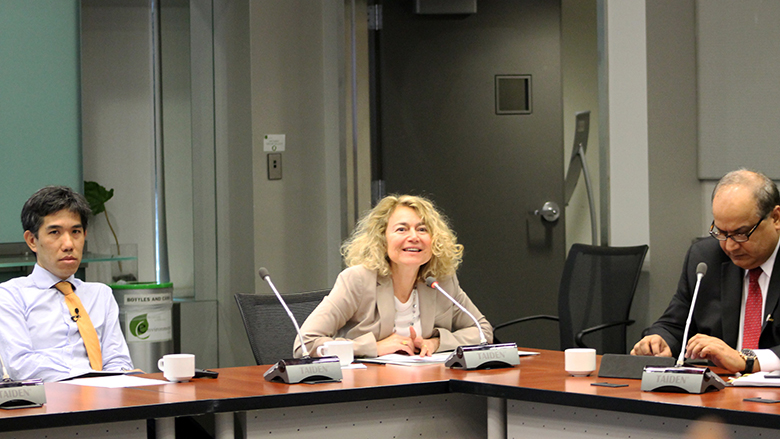What is the common thread that connects elephant poachers, Somali pirates, and Daesh? They can all be understood through the lens of forensic economics, a discipline that applies the tools of economics to criminal activities to find smarter approaches to combating them.
In this month’s Policy Research Talk, Senior Economist Quy-Toan Do discussed how innovative forensic economic tools and data are helping policy makers understand how criminals secure the revenue that funds their activities. By modeling criminals’ incentives and predicting their behavior, development institutions, governments, civil society, and other stakeholders have better tools to disrupt the financing of criminal activities.
“Unfortunately, crime and violent conflict are around us everywhere we look these days,” said Research Director Asli Demirguc-Kunt, who hosted the event. “Today’s Talk is fascinating because it knits together the different experiences and lessons from a series of case studies that range from the pirates of Somalia, and poachers of elephants, to radical Islamists. Ultimately, all of these represent a failure to build effective government institutions, with regional and global consequences for trade, biodiversity, and the flow of refugees, to name only a few.” she said.
First pioneered in the 1970s by Nobel Laureate Gary Becker, forensic economics argues that criminals behave like any other rational economic agent and respond to incentives. Any market has a “supply” of potential criminals and a “demand” for crime—the set of opportunities to commit crimes. With this framework of supply and demand, “we have all of the foundations to have a market, and all of the tools in terms of regulating such a market,” said Do.
Over the past half-decade, Do has taken this theory and applied it to real world examples of crime and violent extremism, with novel and often unexpected insights.


